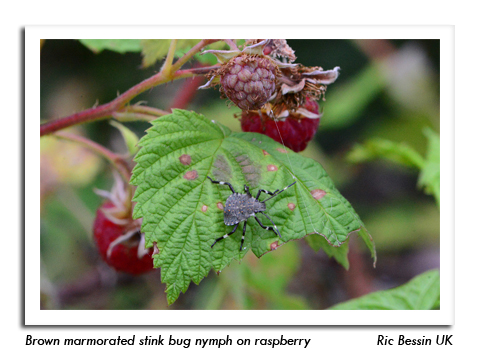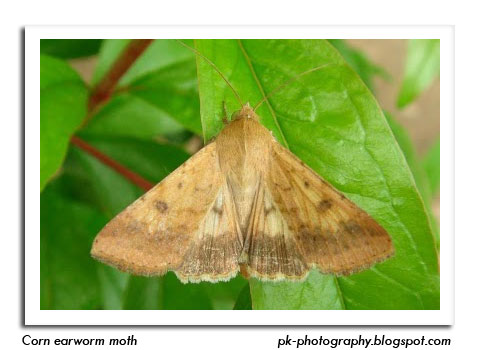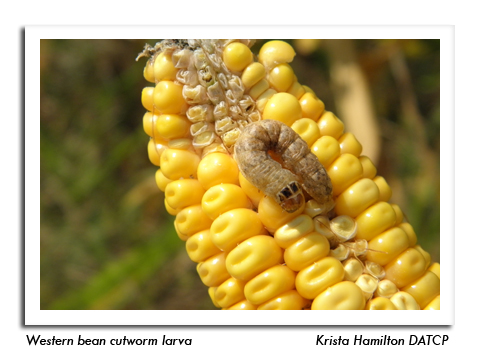
 |
|
|
Looking Ahead
Volume 63 Number 16 Date 08/23/2018 BROWN MARMORATED STINK BUG - This invasive pest has been confirmed for the first time in a Marquette County apple orchard, representing a new county record. Adults have also been captured this season on survey traps in Dane, Door, Kenosha, Racine, and Rock counties. The trap located near Janesville in Rock County has collected a total of 47 adults and 30 nymphs since the first stink bug appeared on June 29. Late-summer populations are increasing in areas of the state where BMSB is established, and it is particularly important for fruit and vegetable growers, gardeners, and property owners to remain alert for stink bug activity from now through October. Populations in the Madison, Milwaukee and Green Bay areas are large enough that swarming will occur on warm fall days as the stink bugs aggregate before seeking overwintering sites. CORN ROOTWORM - Preliminary results of the annual beetle survey indicate populations are mostly low and comparable to last season. District averages thus far range from 0.0 beetle per plant in the southeast region to 0.3 per plant in the southwest. The state average in 175 fields surveyed as of August 23 is 0.3 beetle per plant, only marginally higher than last year's historically low average of 0.2 per plant. A count of 0.75 or more beetles per plant in continuous corn is considered the threshold which indicates a heightened risk of root damage to non-Bt corn in 2019. CORN EARWORM - Large late-season migration flights continued for the second week. The DATCP pheromone trapping network captured 1,086 moths in 15 traps between August 16 and 22, for a cumulative total of 1,936 moths to date. Counts in Dane, Dodge, and Fond du Lac counties were particularly high at 101-348 moths per trap. The latest activity signals that the threat to fresh market sweet corn plantings has intensified and egg laying will persist into September. LATE BLIGHT - Fresh market tomato producers and home gardeners are advised to continue monitoring plants for signs of late blight infection. Development of this disease has been confirmed by the UW on potato in Adams and Marquette counties. Plants showing symptoms of late blight cannot be saved and should be disposed of in plastic bags to limit its spread. Symptomatic potato and tomato plants may be submitted for free testing to the UW Plant Disease Diagnostic Clinic: https://pddc.wisc.edu/sample-collection-and-submission/. WESTERN BEAN CUTWORM - Moth flights have ended statewide. This season's cumulative total capture of 625 moths in 55 traps (11 per trap average) from June 20-August 23 suggests the moth population was lower than last year, when 1,854 moths were collected in 70 traps (26 per trap average). The 2018 average count is also well below the 13-year survey average of 23 moths per trap and the second lowest since surveys began in 2005. Most larvae resulting from the flight are in the intermediate development stages and should enter the pre-pupal overwintering stage by early September. Monitoring network participants may remove their traps at this time. -- Krista Hamilton, DATCP Entomologist 

.jpg)
.jpg)


|
|
|